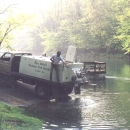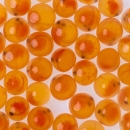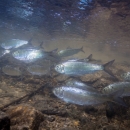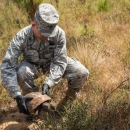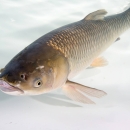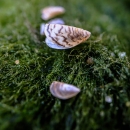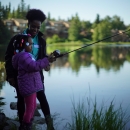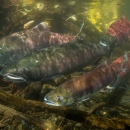What We Do
We conserve America’s most precious resources
America’s freshwater lakes, rivers, and streams are home to some of the most abundant and diverse communities of fish, invertebrates, and plants in the world. Many of these species, such as salmon, trout, Pacific lamprey, river herring, American shad, and striped bass are important cultural, economic, and recreational resources.
Accomplishing our mission
The U.S. Fish and Wildlife Service’s mission is “working with others, to conserve, protect, and enhance fish, wildlife, and plants and their habitats for the continuing benefit of the American people.” To accomplish that mission, the Fish and Aquatic Conservation Program works to:
- Conserve Aquatic Species
- Conserve, Restore, and Enhance Aquatic Habitats
- Manage Aquatic Invasive Species
- Fulfill Tribal Trust and Subsistence Responsibilities
- Enhance Recreational Fishing and Other Public Uses of Aquatic Resources
- Educate and Engage the Public and our Partners to Advance our Conservation Mission
We manage a network of cutting-edge conservation offices across the country.
- 71 National Fish Hatcheries
- 51 Fish and Wildlife Conservation Offices
- 7 Fish Technology Centers
- 6 Fish Health Centers
- 1 Historic National Fish Hatchery and the National Fish and Aquatic Conservation Archives
Stocking the Future: National Fish Hatchery System
In 2023 the National Fish Hatchery System raised and stocked more than 126 million fish and aquatic wildlife to improve sustainable recreational fishing, support fisheries that have been impacted by a federal dam, recover federally listed threatened or endangered species, fulfil our Tribal Trust responsibilities, and prevent at-risk species from becoming endangered.
2023 By the Numbers:
- 126 million - Fish released by national fish hatcheries
- 49 million - Eggs transferred through the National Broodstock program
- 20 million - Fish distributed to Tribal lands
- 118 million - Sport fish stocked to support state recreational fishing
- 20 million - Threatened or endangered animals released to support wild populations and preserve genetic diversity
Top 5 Species Most Frequently Raised and Stocked by National Fish Hatcheries
- Rainbow Trout
- Chinook Salmon
- Lake Trout
- Coho Salmon
- Atlantic Salmon
Restoring Rivers –National Fish Passage Program
Across the U.S., millions of aging, obsolete, or poorly designed dams, roads, and levees are causing widespread ecological damage and putting communities at risk. These barriers trap fish, preventing them from finding food, shelter, and habitat to spawn. Outdated and aging infrastructure affects us too: it degrades water quality, can heighten flood risk, and creates dangers for recreational users. Fortunately, restoring aquatic connectivity offers a win-win solution for both people and nature.
Since 1999, the National Fish Passage Program has worked with more than 2,000 local communities, Tribes, and private landowners across the country to remove or bypass more than 3,500 barriers to fish passage fish passage
Fish passage is the ability of fish or other aquatic species to move freely throughout their life to find food, reproduce, and complete their natural migration cycles. Millions of barriers to fish passage across the country are fragmenting habitat and leading to species declines. The U.S. Fish and Wildlife Service's National Fish Passage Program is working to reconnect watersheds to benefit both wildlife and people.
Learn more about fish passage and reopened more than 64,000 miles of once inaccessible upstream habitat for fish and wildlife.
2023 By the Numbers
- 118 barriers removed or bypassed
- 2,200 miles of stream habitat reopened
- 24,812 acres restored for fish and other wildlife
Monitoring and Assessment: Tracking the Health of Freshwater Resources
Fish and Wildlife Conservation Offices operate hundreds of fish and habitat monitoring programs throughout the year in watersheds across the country. The data collected by these programs lets us know what fish are thriving and which need protection. We share this data with states, Tribes, and partners to inform decisions about what conservation efforts are working and where more efforts are needed.
Protecting Water – Aquatic Invasive Species Program
Aquatic invasive species invasive species
An invasive species is any plant or animal that has spread or been introduced into a new area where they are, or could, cause harm to the environment, economy, or human, animal, or plant health. Their unwelcome presence can destroy ecosystems and cost millions of dollars.
Learn more about invasive species cost America billions of dollars every year and cause tremendous harm to the environment, economy, human health, and recreation. We work to protect waterways and communities from threats of invasive species through prevention, early detection, suppression, and eradication.
2023 – 2024 Investments:
- Early Detection Rapid Response - 9 projects awarded funds so far in 2024, totaling roughly $1.96M
- Eradication - 6 projects awarded funds, totaling roughly $2.96M
- These funds will address species like invasive crayfish, zebra mussels, hydrilla and others
Improving the Health of Aquatic Animals - Aquatic Animal Drug Approval Partnership
When fisheries professionals have more options for medications, they are better equipped to rear healthy fish, manage healthy aquatic populations, and maintain a healthy environment. Since the late 1990's the Aquatic Animal Drug Approval Partnership has contributed to the majority of new fish medications approved in America. This work allows fisheries professionals to more effectively and efficiently rear and manage a variety of fish species to meet production goals, stock healthy fish, and maintain a healthy environment. Since 1999 the Aquatic Animal Drug Approval Partnership’s National Investigational New Animal Drug Program has:
- Conducted 13,000 studies to ensure medications are safe to aquatic animals.
- Treated 1.5 billion aquatic animals.
- Saved 50 million fish each year for restoration, recovery, recreation, or the dinner table.
Fulfilling Tribal Trust and Subsistence Responsibilities
Natural resource management programs operated by federally recognized Tribes protect the traditional, cultural, spiritual, medicinal, subsistence, recreational, and economic needs of their communities within their respective Tribal lands. The collaboration between the Fish and Aquatic Conservation program and Tribes plays a crucial role in protecting both natural and cultural resources.
Improving Access - Welcoming the Next Generation
The Fish and Aquatic Conservation program is committed to inspiring future generations to love, understand, and conserve America's natural resources.
2023 By The Numbers
- 992,805 visitors to national fish hatcheries and conservation offices
- 188,981 participants in community recreation and education programs
- 83,026 community volunteer hours spent with hatcheries and conservation offices

